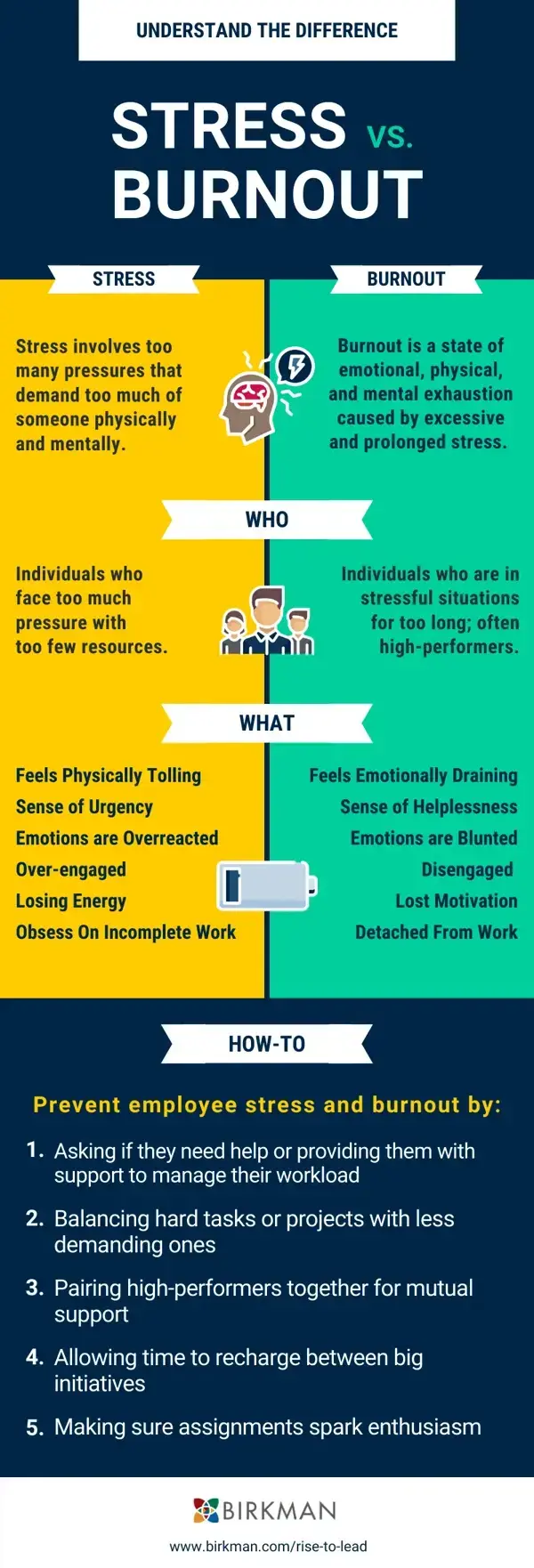Occupational and at-home pressures can lead to high levels of stress for your employees, especially your high-performers. Over time, stress can cause employees to struggle with staying productive and bringing their best selves to work. And while workplace stress is a common, talked about phenomenon in the workplace, it's also important to have conversations around employee burnout. As a leader, it's crucial to understand the difference and be aware of the potential impact of stress and burnout at workplace.
According to research, companies with engaged employees are likely to be 78% more profitable, 40% more productive, five times less likely to have a safety incident, and see a stock price growth of 2.5 times that of peers. It's essential that your employees can manage their feelings of stress, to ensure they are most engaged and productive.
Often, stress consists of the following feelings:
- Persistence: "I am going to keep putting all of my energy into this!"
- Overwork: "I am so overwhelmed and have so much to do!"
- Obsession: "I will make a difference! No matter what the impact is on me! "
Because stress feels like there is an end in sight, it's easy to get trapped into putting all of your physical, mental, and emotional energy into the situation or project. However, if stress is left unmanaged or unresolved for too long, it can quickly build up and turn into burnout.
Workplace burnout results from prolonged feelings of stress, and often results in:
- Exhaustion: "I am so tired."
- Cynicism: "I don't care anymore."
- Inefficacy: "I'm not even making a difference."
Burnout is caused by having invested too much, not taking time for yourself to recoup, and not seeing any difference in the result. The World Health Organization (WHO) declared burnout as a syndrome linked to chronic workplace stress in 2019, revealing how important it is for organizations to play an active role in preventing and reducing burnout among the workforce.
Therefore, it's crucial to notice when team members are unaware of their stressors or stress triggers or are headed towards burnout, and to provide them with a way to navigate their stress. Learn more about the difference between stress and burnout and how you can prevent them using the infographic below.

Want to learn how your high-performers can stay engaged and prevent burnout? Connect with us.
